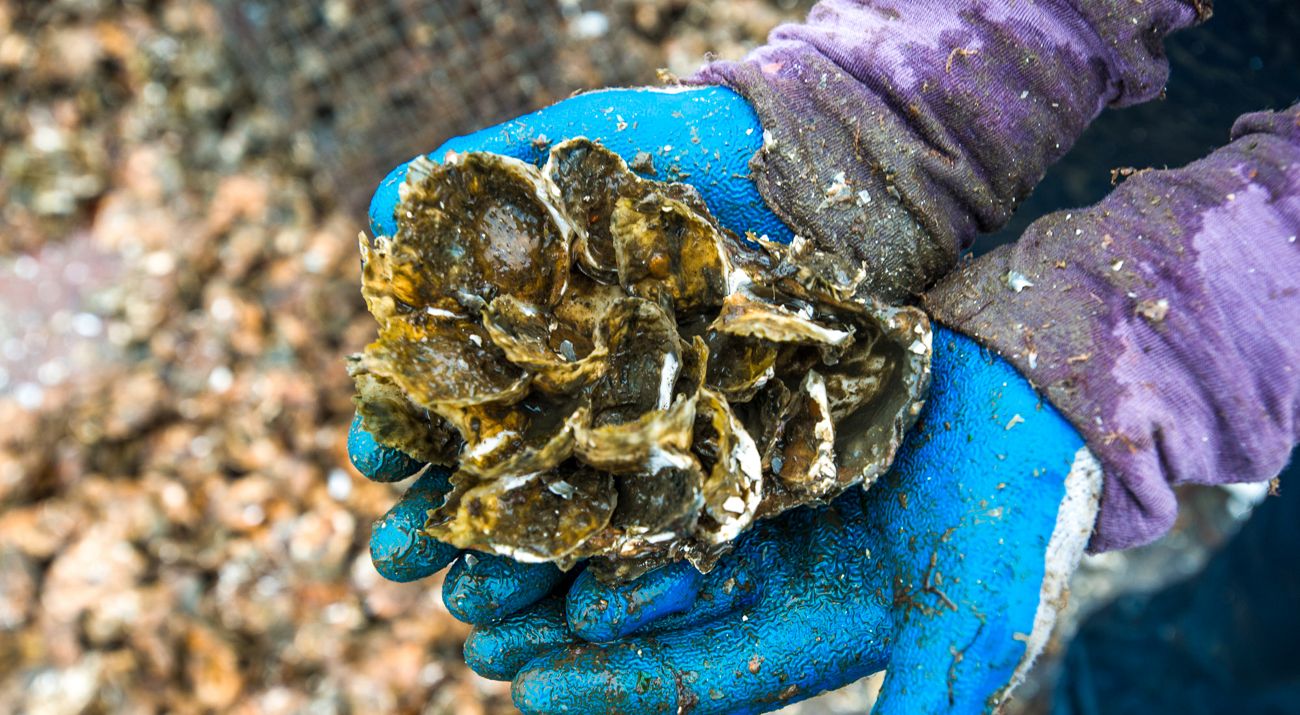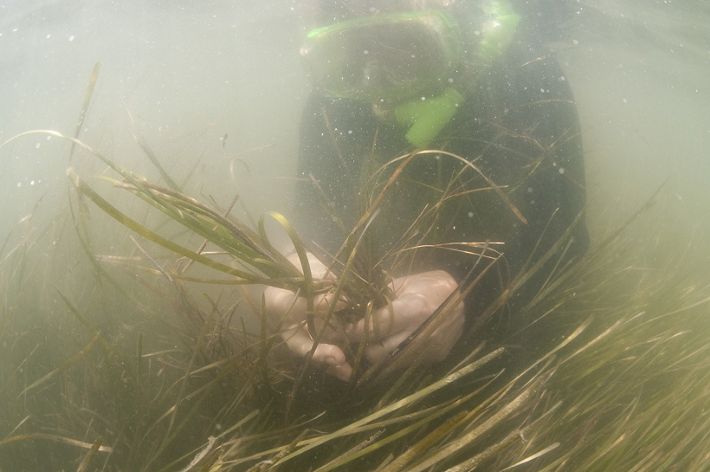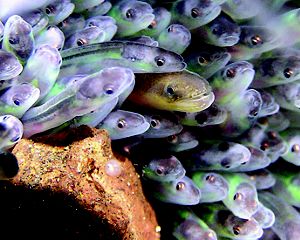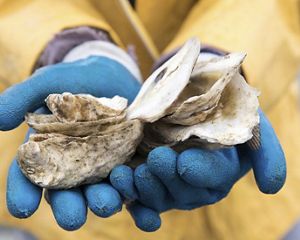
Turning the Tide
On New Hampshire's seacoast, we're restoring the Great Bay Estuary one oyster at a time. Here's why.
When Kyle Hollasch gazes at New Hampshire’s Great Bay, he pictures several million oysters below the surface working non-stop to help clean the water.
Hollasch and his family know a few hundred of those oysters very well. They raised them as part of a program to restore the Great Bay Estuary—a water system crucial to nature and the region’s quality of life and economy. “You get to see the oysters grow from almost invisible to the size of a half dollar at the end of a couple of months,” Hollasch says. “It’s one of those ways to mark the progress of summer.”
For The Nature Conservancy, it’s also one way to mark the progress of making Great Bay healthy again.
Quote: Kyle Hollasch

You get to see the oysters grow from almost invisible to the size of a half dollar at the end of a couple of months. It’s one of those ways to mark the progress of summer.
Oysters Improve Great Bay Water Quality
Seven rivers carry pollution and runoff from 52 communities into Great Bay, choking the bay with sediment and with bacteria and excess nutrients from septic systems and treated wastewater. Along with historic overharvesting and disease, the pollution helped nearly wipe out a massive oyster population and continues to threaten fish, birds and other creatures.
“About 70 percent of all commercial fishery species spend part of their life cycle in the estuary,” says Alix Laferriere, former coastal and marine director in New Hampshire. That’s why it’s so important to restore the bay, with the help of millions of oysters.
Individual oysters clear water by filtering up to 30 gallons a day, removing suspended particles and excess nutrients. Clearer water helps eel grass regain a foothold, which calms the movement of sediment that can smother oyster reefs. Eel grass also removes carbon from the atmosphere and, like restored oyster beds, provides safe habitat for many water species.
In the 1970s, Great Bay featured about a thousand acres of oyster reefs, covering about 90 percent of the bay. Today, reefs cover only a fraction—about 10 percent. Since 2009, our Oyster Restoration Program has worked to restore more than 30 acres of reef and 3.5 million oysters. To get the work done, we partner with volunteers, scientists who reconstruct oyster reefs and raise oysters at UNH’s Jackson Estuarine Laboratory, state agencies, commercial oyster farmers and other groups such as the Piscataqua Region Estuaries Partnership (PREP). “We actually use oyster population health to help us understand what is happening in Great Bay,” says New Hampshire State Director Rachel Rouillard.
At New Hampshire’s Department of Environmental Services, Coastal Program Administrator Steve Couture says it will take time to reverse pollution in Great Bay, even with improvements in wastewater treatment plants and septic systems throughout the estuary. Some communities also are treating storm runoff, instead of channeling it directly into water that feeds the bay. Couture says the bay needs the new technology and the new oysters: “I’m not sure how Great Bay would be able to fully recover without having that restored population."
A Healthy Great Bay for People and Nature
A healthy Great Bay benefits countless businesses and hundreds of thousands of residents and visitors who enjoy fishing, boating, water skiing, swimming and savoring the landscape. Our Great Bay Team—Great Bay Program Manager Brianna Group and CHabitat Restoration Coordinator Kim Arlen—are shellfish ecologists who bring scientific expertise to the bay and can call on a network of counterparts locally and worldwide.
We’re also working with PREP to engage municipalities, residents, people who depend on the water for employment or recreation, environmental organizations and state and federal agencies in restoration efforts.Commercial oyster growers, or shellfish farmers who grow oysters for market also are growing them for the restoration reefs through our innovative SOAR Program (Supporting Oyster Aquaculture and Restoration).
Quote: Rachel Rouillard
It does start with something as small as an oyster. If they can survive, it means we can survive. That’s why we care about it.

For the future, we’re embracing a process called restoration by design—developing a plan for short-term restoration opportunities and a long-term strategy on where and how to establish new oyster reefs. The plan will allow restoration partners to pursue a collective vision for oyster restoration, balancing potential new oyster restoration sites with other interests, such as aquaculture, recreational oystering and eelgrass regeneration.
It’s a huge undertaking, based on something you can hold in your hand.
“It does start with something as small as an oyster,” says Rouillard. “If they can survive, it means we can survive. That’s why we care about it.”
Help Raise Nature's Voice from a Whisper to a Roar
Together we can find creative solutions to tackle our most complex conservation challenges and build a stronger future for people and nature. Will you help us continue this work?



